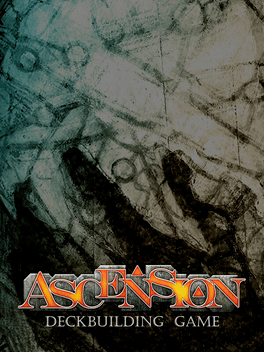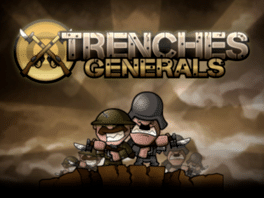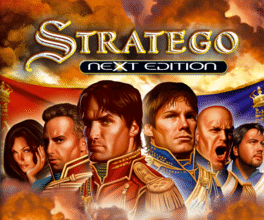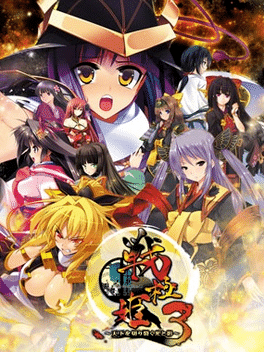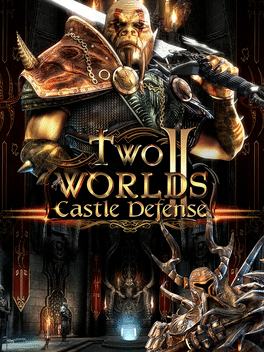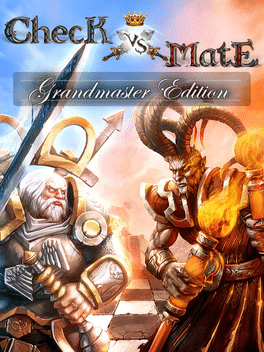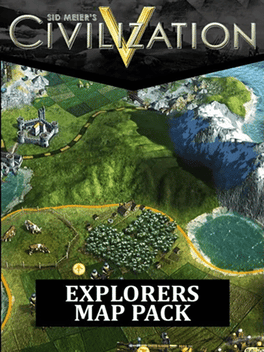New Strategy Games - Page 147
-
Worms Reloaded: Puzzle Pack
2011
The Worms Reloaded "Puzzle Pack" features 20 mind-boggling single-player puzzle missions, designed to test even the most cunning Worms players. The "Puzzle Pack" also includes 3 new hats, 3 new speech banks, 3 new gravestones, a new "puzzle" landscape theme and 12 new Achievements. -
Ascension: Deckbuilding Game
2011
star 4Ascension: Deckbuilding Game is now available for your PC and Mac, complete with 9 full expansion decks! Play alone or with friends to battle against the Fallen One for honor and victory. Conceived and designed by Justin Gary, Ascension will provide hours of engaging and strategic game play for enthusiasts and experienced gamers alike. -
Trenches Generals
2011
-
Stratego: Next Edition
2011
Become the greatest general of all time. In Stratego: Next Edition you must demonstrate your strategic skills on the battlefield. Stratego' s unique game play pits you against opponents who will do everything in their power to outsmart you. Rise to the challenge and confront them in battle. Emerge victorious and you’ll become the greatest general of all time. -
Sengoku Hime 3: Tenka o Kirisaku Hikari to Kage
2011
Third in SystemSoft's series of strategy games set in an anime girl-filled feudal Japan. -
Learn to Fly 2
2011
Learn to Fly 2
2011
star 7Learn to Fly 2 is a browser based game where players control a penguin in its journey to fly. -
Modern Ludo
2011
Modern Ludo
2011
Unlike traditional Ludo (Aeroplane / Flying Chess), Modern Ludo modifies the game rule to make its suitable of mobile device and more excited. And also it provides ultimate graphical effect, makes Ludo game more funny. -
Storm: Frontline Nation
2011
star 5Arm yourself for the greatest conflict of modern times! STORM – Frontline Nation revolutionizes the turn-based strategy genre with unbelievable strategic depth and a cinematic scenario. Scarce resources and a prolonged economic crisis plunges half the world into strife, which can only be resolved by a force of arms. The tension laden mood has a host of nations mobilizing troops and researching advanced warfare technologies. New groups are created, accords are signed and alliances turn to face war. The player has myriad of possibilities available to them. in terms of resource and troop management. Enormous freedom of action in the areas of combat, research and diplomacy allows the player to secure world domination for one of the nations. The perfect mix of strategy and turn based combat makes Storm: Frontline Nation unique in its genre. -
City Story
2011
City Story
2011
A FarmVille-esque game for the iPhone/iPad but instead of plants and animals, it involves building a city. -
Supreme Ruler: Cold War
2011
star 6.5As the 1950’s approach, the Korean War looms, the Arms Race intensifies, the Berlin Crisis leads to the formation of NATO, and the world anticipates a new World War. As leader of the United States or the Soviet Union, you must make the correct Economic, Diplomatic, Domestic and Military decisions to successfully navigate your country through this dangerous historical era and increase your nation’s Sphere of Influence on the world stage. -
Garden Dash
2011
Garden Dash
2011
star 4The freshest locally grown produce is in DinerTown! Barb the Businesswoman, Flo's best tipping customer, takes up gardening to escape the high-stress demands of her corporate job. Full of business savvy, she starts an urban gardening business - help her transform DinerTown's city lots into thriving gardens! Starting on the apartment rooftop and moving onto the local playground, tend to plants with quirky needs, customize layouts, and grow produce for the entire DinerTown community. Can you help Barb find relief? Find out in Garden Dash, PlayFirst addictive time management game that fresh from the city! • Five city lots to transform into thriving gardens • Quirky plant requests: roses need headphones, peaches need clothes, and much more • Personalization of your garden layout: decide where everything goes! -
Check vs Mate: Grandmaster Edition
2011
A bundle containing the base game and its DLC packs. Includes: - Check vs Mate - Check vs Mate: Dark Desert DLC - Check vs Mate: Floating Island DLC A premium version adds a digital artbook and the game's soundtrack -
American History Lux
2011
American History Lux
2011
American History Lux is a computer strategy game that takes you through the wars that have shaped American History. -
Hearts of Iron III: Semper Fi - Dies Irae Götterdämmerung
2011
Dies Irae adds increased depth and scope to playing as Germany through World War 2. Special events, mechanics and graphics have been added and designed to make the Hearts of Iron experience even more engrossing. The emphasis has been placed on the aggressive nation of the war. This allows players to guide and control the war’s outcome. -
Doodle God 2
2011
Doodle God 2
2011
The long awaited sequel from creators of Doodle God/Devil series is here! Doodle God 2 developed by JoyBits Ltd features improved reactions set, tons of funny quotes, two additional episodes of gameplay and updated graphics. The ultimate World Creation experience work your way up, all the way from bacteria and beetles, to clay and ceramics, to tools, weapons and beyond. But beware, creating a whole world is not so easy - inventing the wheel might just end in a plague of zombies. Unleash your inner god with Doodle God 2! -
Assault Commander Ultimate
2011
star 5This is a great Assault Commander collection pack, it includes maps from the following editions: Assault Commander (original) 8+1 maps Assault Commander Advance 8+1 maps Assault Commander Bravo 8+1 maps -
Sid Meier's Civilization V: Civ and Scenario Pack - Denmark (The Vikings)
2011
The Denmark Civilization and Scenario Pack brings you both the Denmark Civilization and the new Scenario, 1066: Year of Viking Destiny, to further enhance your Civilization V experience. Rule the world as Harald Bluetooth, with your powerful Berserker warriors and Ski Infantry! -
Sid Meier's Civilization V: Explorer's Map Pack
2011
The Explorer’s Map Pack for Civilization V includes ten single-player maps. Five are newly created, based on real-world locations—Amazon, Caribbean, Africa, Bering Strait, and Northwest Passage—designed to reflect the general layout and features of each region. The other five—Sandstorm, Ice Age, Haunted, Highlands, and Oasis—are scripted thematic maps with randomized elements to offer varied gameplay across multiple sessions. -
Tikal
2011
Tikal
2011
Send your expedition members out from base camp to discover buried treasure and uncover over-grown temples. But stay alert, as both treasures and temples can change hands as you compete with other expeditions! Each turn, you place a new tile representing an area of the jungle you have just mapped, then spend action points to explore. When a volcano tile is revealed, each player has one extra chance to improve their position, then points are awarded. Plan your moves and stake your claims wisely, and your expedition will take it's place in the history books!

